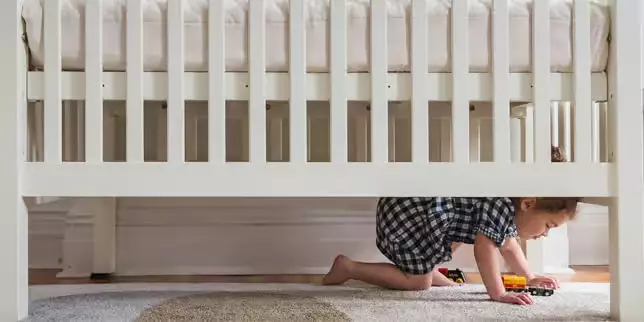Moving away from the comforting cocoon of a crib to the adventurous realms of a toddler bed is more than just a rite of passage; it’s a pivotal moment in your child’s development that must be handled with care and attentiveness. While there may be societal expectations suggesting that transitioning into a big bed is the natural next step, the truth grapples against this conventional wisdom. Each child is unique, and understanding the right moment to make this switch is crucial for fostering a positive sleep environment.
Understanding Developmental Readiness
One of the most compelling reasons to postpone your child’s move to a toddler bed is their age. Many experts, including pediatric sleep consultants, recommend waiting until at least three years old. Cribs provide a secure environment that helps young children feel at ease, akin to creating a physical boundary that nurtures their emotional stability. Before this age, kids might not possess the self-awareness or emotional maturity to handle the freedoms that come with a big bed. Rushing this transition could lead to sleepless nights not just for them, but for the entire family as well.
Tackling Existing Sleep Challenges
For parents grappling with a toddler who already battles sleep issues such as frequent waking or difficulty settling down, jumping to a toddler bed might exacerbate these problems. In essence, a bed may seem like freedom, but for a child struggling with sleep, it can feel like an invitation to chaos. Hence, investing time to rectify these existing sleep behaviors and establishing a robust bedtime routine before making the leap is not merely advisable, but essential for overall well-being. Tweaking bedtime rituals, enforcing consistent sleep schedules, and perhaps even engaging in sleep training can foster a much-needed supportive framework before tackling the big bed transition.
Cognitive Contentment: Is Your Toddler Happy in the Crib?
Another noteworthy aspect to consider is your toddler’s emotional state regarding their current sleeping arrangement. Does your child exhibit signs of contentment in their crib? If the answer is yes, hold your horses! The allure of transitioning may stem from a parental desire for growth, yet if a child is happy and secure, then the crib serves its purpose beautifully. There’s no rush—wait until your child is genuinely curious or expresses a desire for a big bed on their own.
Assessing the Climber Factor
Is your toddler a natural-born climber? Active toddlers often find ways to explore their surroundings, which may include scaling their cribs. However, rather than hastily dismissing the crib, address the underlying desire to climb. Reintroducing sleep sacks, which can restrict their ability to climb, or utilizing reward systems to encourage staying in bed can mitigate safety concerns. Engaging in proactive strategies will not only promote safety but also arm parents with a toolkit for effective boundary-setting, ensuring that any potential issues are managed before they escalate.
Recognizing Boundless Behavioral Challenges
If your toddler thrives on pushing limits and testing boundaries during awake hours, nighttimes can mirror this behavior, complicating sleep situations further. Establishing and reinforcing boundaries during the day could translate into improved adherence at night, with tools like toddler clocks introducing them to the concept of time and sleep schedules. In this way, the transition becomes less about the bed itself and more about evolution in behavioral expectations and compliance.
Navigating New Arrivals and Current Circumstances
For families expecting additional children, the thought of a toddler transition may be intertwined with concerns about cohabitation and shared spaces. If your little one isn’t ready, it may be beneficial to maintain two cribs for a while, allowing each child the comfort and security they require. It’s worth understanding the specific needs of a toddler before introducing them to any changes associated with a newborn sibling. Instead of inviting chaos, the priority should be maintaining a nurturing environment where everyone has their own space to thrive.
Ultimately, should you determine that your toddler checks off all the boxes for readiness, transitioning can open up a delightful world of autonomy and big-kid adventures. However, taking the time to reflect on their individual needs, behaviors, and emotional readiness before making such a significant leap cannot be overlooked. The journey from crib to bed is far from a one-size-fits-all episode; when tackled thoughtfully, it can be a joyful experience that fosters growth and independence.

